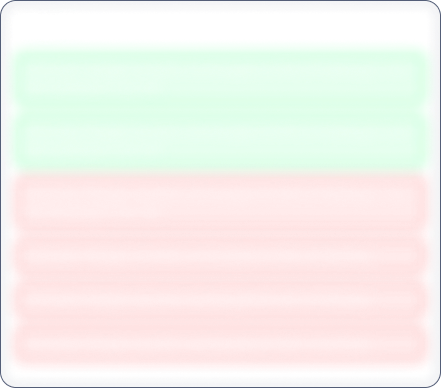Diwali Mega Sale 65% off
Midwest

No Data Available
Investor Sentiment
Midwest Share price and Fundamental Analysis
Key Metrics
Stock Returns
Stock Heatmap

No Stocks
Smart Score

Unlock Smart Score
See Detailed Analysis & Insights


Unlock Insights
See Detailed Analysis & Insights
Technicals
Returns Calculator
If you would have investedResearch Report
No Research Report
Corporate Action

No Data Available
Financials
Key Ratios
ROE
Avg ROE (3 Yrs) : NaN%
ROCE
Avg ROCE (3 Yrs) : NaN%
ROA
Avg ROA (3 Yrs) : NaN%
NPM
Avg NPM (3 Yrs) : NaN%
Dividend History
5 Year FactSheet
Documents

No Data Available
News
Midwest Management and History
Company Management


Unlock Management Data
See Detailed Analysis & Insights
Company History
Midwest Limited was incorporated on December 11, 1981 as Midwest Granite Private Limited', a Private Limited Company by the Registrar of Companies, Andhra Pradesh at Hyderabad. Subsequently, the name of the Company was changed to Midwest Private Limited' and a fresh Certificate of Incorporation dated July 2, 2024 was issued by the Registrar of Companies. The status then converted into a Public Limited Company and the name was changed to Midwest Limited' and a fresh Certificate of Incorporation dated August 28, 2024 was issued by the Registrar of Companies, Central Processing Centre.
The Company is engaged in the business of exploration, development and operation of mines, stone processing and fabrication, marketing, distribution and export of natural stones. It is one of the largest producers in Absolute Black Granite, both of which have high demand. The existing business activities primarily comprise extracting and processing Dimensional Granite, particularly the Black Galaxy and Absolute Black varieties. In the Natural Stone Segment, it primarily produce dimensional blocks and slabs of Black Galaxy Granite and Absolute Black Granite. Black Galaxy Granite is a premium stone used in real estate projects for applications such as countertops and vanities, flooring, cladding, bathroom walls and floors, swimming pools, fire places and external/ internal aids in construction. Absolute Black Granite is known for its deep uniform black color and is prized for its elegance and versatility. In addition, its hardness, durability, resistance to weathering, visual appeal and low maintenance are some of its positive attributes. Absolute Black Granite is used to make sculptures, idols of deities, pillars, lintels, beams installed over doors and windows, and plinths i.e., heavy bases used to support statues and has been extensively used in temples, monuments and memorials and is also used in modern architecture such as kitchen counters, flooring, bathroom vanities, cladding, windowsills, backsplashes, fireplaces, steps, building facades and fountains.
In addition to Natural Stone business, it also manufacture Diamond Wire, which is a precision cutting tool employed in natural stone and construction industries to size stones and other hard substances with precision in mines and processing/ fabrication facilities. While operations in Diamond Wire segment began with backward integration and supporting Natural Stone Segment, at present, these operations in this segment cater both to captive consumption as well as market demand of the Indian mining and construction industry.
The Company currently has 16 operational Granite Mines across 6 locations in the states of Telangana and Andhra Pradesh in India producing Granite varieties such as Black Galaxy, Absolute Black, Tan Brown, along with 1 Granite processing facility in each of the states of Telangana and Andhra Pradesh. In addition to operational mines, it also established a strong resource base comprising 25 locations across Andhra Pradesh, Telangana, Karnataka and Tamil Nadu.
The Company is planning an Initial Public Issue by raising funds aggregating upto Rs 650 Crore Equity Shares of Face Value of Rs 5 each comprising a Fresh Issue of Rs 250 Crore Equity Shares and Rs 400 Crore Equity Shares through Offer for Sale.
Midwest Share Price
Midwest share price reflects investor sentiment toward the company and is impacted by various factors such as financial performance, market trends, and economic conditions. Share price is an indicator which shows the current value of the company's shares at which buyers or sellers can transact.
Midwest Market Cap
Market capitalization of Midwest indicates the total value of its outstanding shares. Marketcap is calculated by multiplying share price and outstanding shares of the company. It is a helpful metric for assessing the company's size and market Valuation. It also helps investors understand how Midwest is valued compared to its competitors.
Midwest PE Ratio
Midwest PE ratio helps investors understand what is the market value of each stock compared to Midwest 's earnings. A PE ratio higher than the average industry PE could indicate an overvaluation of the stock, whereas a lower PE compared to the average industry PE could indicate an undervaluation.
Midwest PEG Ratio
The PEG ratio of Midwest evaluates its PE ratio in relation to its growth rate. A PEG ratio of 1 indicates a fair value, a PEG ratio of less than 1 indicates undervaluation, and a PEG ratio of more than 1 indicates overvaluation.
Midwest ROE (Return on Equity)
Return on Equity (ROE) measures how effectively Midwest generates profit from shareholders' equity. A higher ROE of more than 20% indicates better financial performance in terms of profitability.
Midwest ROCE (Return on Capital Employed)
Return on Capital Employed (ROCE) evaluates the profitability of Midwest in relation to its capital employed. In simple terms, ROCE provides insight to investors as to how well the company is utilizing the capital deployed. A high ROCE of more than 20% shows that the business is making profitable use of its capital.
Midwest Total Debt
Total debt of Midwest shows how much the company owes to either banks or individual creditors. In simple terms, this is the amount the company has to repay. Total debt can be a very useful metric to show the financial health of the company. Total debt more than equity is considered to be a bad sign.
Midwest Debt to Equity Ratio
The Debt-to-Equity (DE) ratio of Midwest compares its total debt to shareholders' equity. A higher Debt to Equity ratio could indicate higher financial risk, while a lower ratio suggests that the company is managing its debt efficiently.
Midwest CAGR (Compound Annual Growth Rate)
CAGR shows the consistent growth rate of Midwest over a specific period, whether it is over a month, a year, or 10 years. It is a key metric to evaluate the company’s long-term growth potential. Main metrics for which CAGR is calculated are net sales, net profit, operating profit, and stock returns.
Midwest Technical Analysis
Technical analysis of Midwest helps investors get an insight into when they can enter or exit the stock. Key components of Midwest Technical Analysis include:
Support Levels (S1, S2, S3)
There are usually multiple support levels, but the main support levels for a stock are S1, S2, S3. Support levels indicate price points where stock might get support from buyers, helping the stock stop falling and rise.
Resistance Levels (R1, R2, R3)
There are usually multiple resistance levels, but the main resistance levels for a stock are R1, R2, R3. Resistance levels represent price points where Midwest shares often struggle to rise above due to selling pressure.
Midwest Dividends
Dividends refer to the portion of the company’s profits distributed to its shareholders. Dividends are typically paid out in cash and reflect Midwest ’s financial health and profitability.
Midwest Bonus Shares
Bonus shares are usually given by companies to make the stock more affordable, increase liquidity, boost investor confidence, and more.
Midwest Stock Split
Stock split increases the number of its outstanding shares by dividing each existing share into multiple shares. When the company offers a stock split, the face value of the stock reduces in the same proportion as the split ratio.
Midwest Financials
The financials of Midwest provide a complete view to investors about its net sales, net profit, operating profits, expenses, and overall financial health. Investors can analyze financial data to assess the company’s stability and also understand how the company has been growing financially.
Midwest Profit and Loss Statements
The profit and loss statement of Midwest highlights its net sales, net profit, total expenditure, and operating profits in the current financial year. This Profit and Loss statement is crucial for evaluating the profitability and financial stability of Midwest .
Midwest Balance Sheet
The balance sheet presents a snapshot of Midwest ’s assets, liabilities, and equity of shareholders, providing insights into the financials of the company.
Midwest Cashflow Statements
Cashflow statements track the company's cash inflows and outflows over a period. It is an essential tool for understanding how well the company manages its liquidity and finances.


